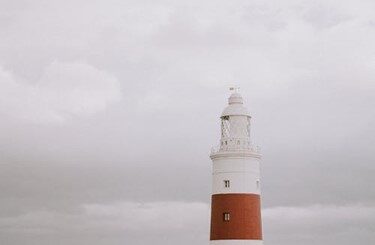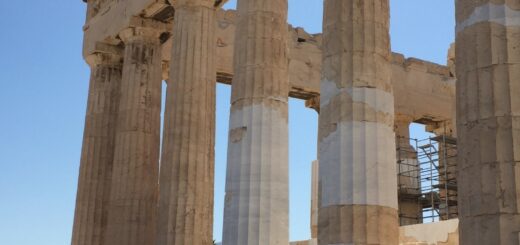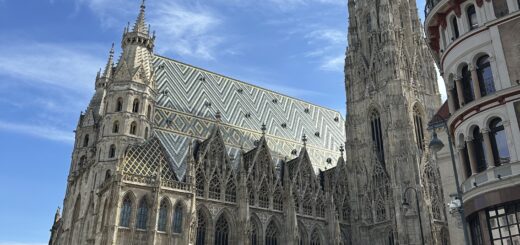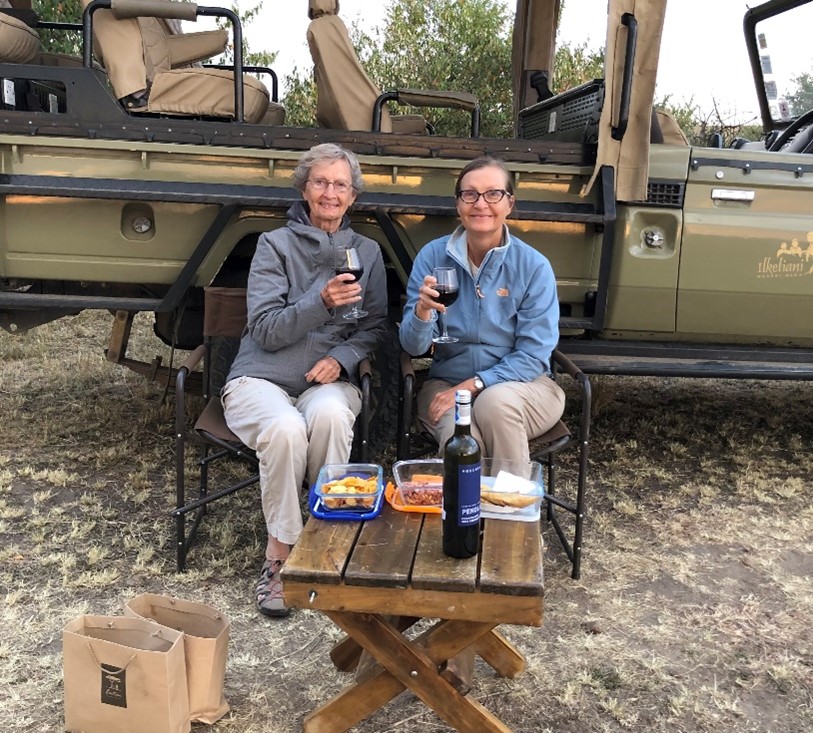Valencia
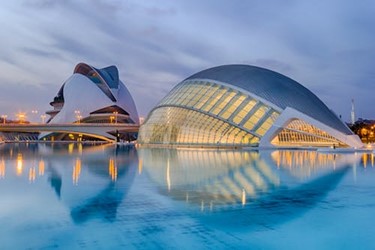
Travel Advice for Seniors: Valencia
On the way to Valencia we stopped at Guadix, for a look at the cave houses there. The caves date back to the 16th century. The soil was accommodative to digging in the rooms, including the stables. We met a couple who lived in a cave dwelling. You would think it would be primitive, but it was pretty nice: The walls were painted, rooms were carpeted and the furniture was current. It really looked like any other home, except its unique history.
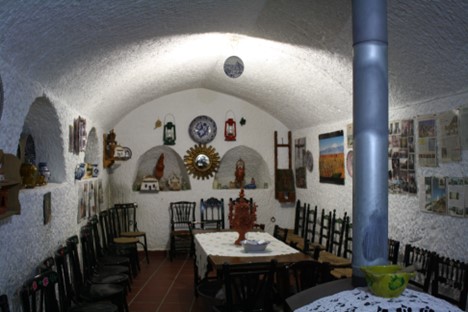
Our second to last stop on our small group tour through Spain was at València. We were fortunate to visit before the flood of 2024, which decimated the city. Several hundred lives were lost in coastal regions of Spain when a year’s worth of rain fell in just eight hours.
The first thing you notice in València, is work of architect Santiago Calatrava. He is particularly well known for his innovative design work regarding bridges (three are in Valencia), but several buildings of his design, including the famous Hemisfaric, City of Arts and Sciences and the Opera house are also in Valencia.
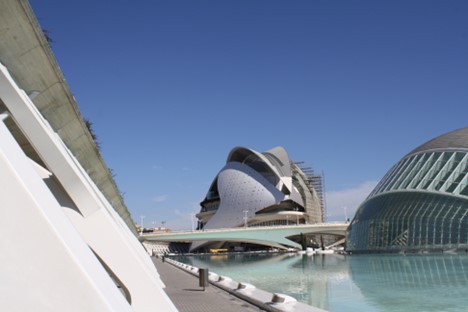
Along with its many monuments and plazas, Valencia is also famous worldwide for paella. Paella is a rice dish made with rice, saffron, vegetables, chicken, and seafood cooked and served in one large pan. Bring lots of friends, it’s a lot to eat! Delicious!
There is plenty to do in Valencia and it is easy and enjoyable to walk around. We took an early evening walk through a park that was a former riverbed. Apparently, the river had been rerouted to make green space in the central city. We noticed that there was a local event at one end of the park, so headed that way. Interestingly, we were passed by a large group of bicyclists, pedaling only in their underwear! We found out later that they were protesting the lack of bicycle lanes in Valencia (it is called bicycling “nude” or without any protection from traffic!). Interesting afternoon….
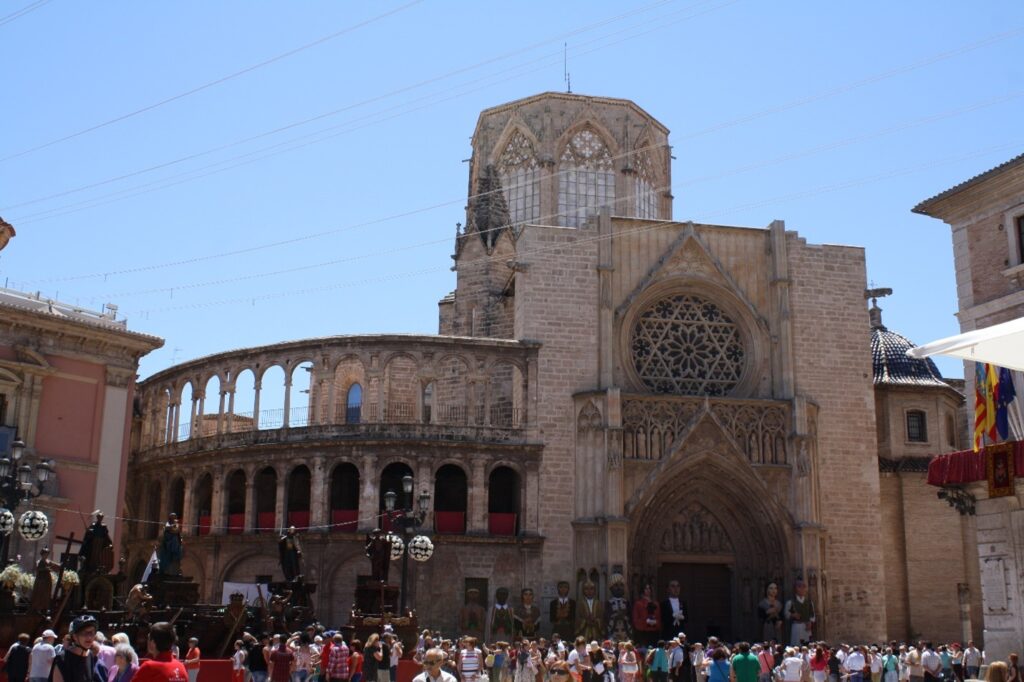
Metropolitan Cathedral–Basilica of the Assumption of Our Lady of Valencia, or the Valencia Cathedral was first on our tour stop. This Cathedral has witnessed several important historical events, the most important being the delivery of what is believed to be the Holy Grail by King Alfonso V of Aragon in 1437. The Holy Grail is the chalice used by Jesus at the last Supper. The chalice is visible in the Chapel of the Holy Chalice, which is located to the right of the main entrance.Accessible entrance and some accessible tours.
The original church built here was a Roman temple, followed by a Visigothic cathedral, followed by a mosque. The current cathedral was built on top of all of them with construction beginning in 1262.
Next up was the fascinating Fallas Museum. Originating from a carpenter’s tradition of burning pieces of wood to celebrate the arrival of spring, Las Fallas is truly unique to the area and was declared an Intangible Cultural Heritage of Humanity by UNESCO. Accessible entrance, elevator and restrooms.
Every year very large monuments of wood and papier mâché are placed in city squares to be viewed and then all sculptures are burned at midnight on a Sunday to celebrate the arrival of Spring. Called La Crema, this always happens at the Feast of St Joseph.
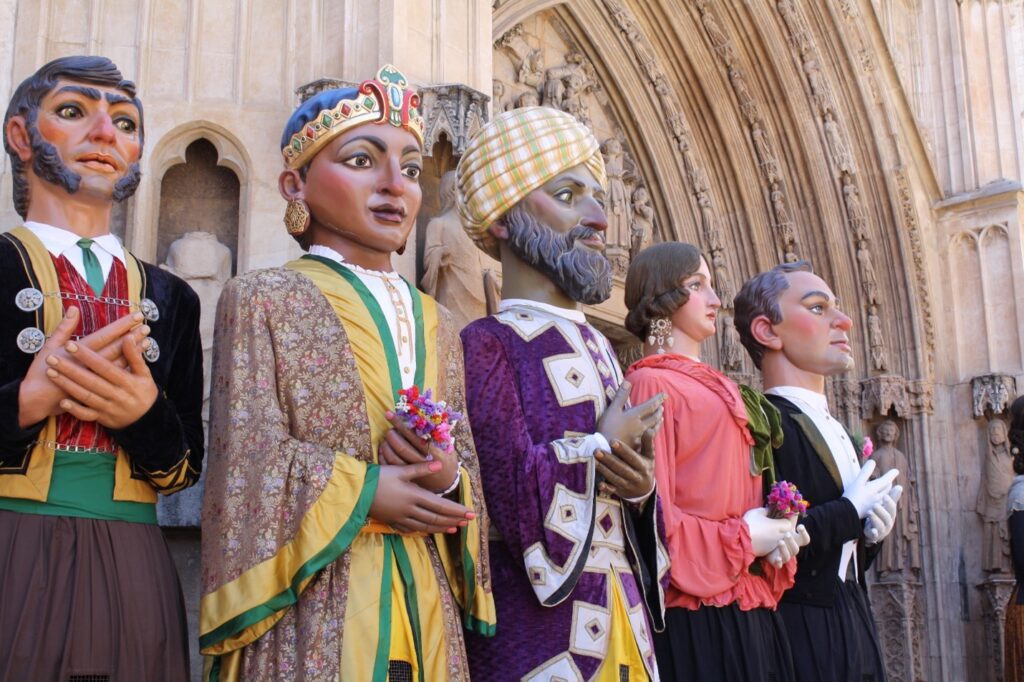
The must-see Museu de Belles Arts de València was next up. It was founded in 1913 and houses several important works of art, most dating from the 14th–17th centuries. The second largest art gallery in Spain, it features rooms dedicated to Sorolla, Goya, Velázquez, and El Greco. Not to be missed are: Self portrait of Diego Velázquez, a St. John the Baptist by El Greco, and Goya’s Playing Children.Accessible.
Several important medieval paintings and religious art are also featured as well as works from the Valencian School.
We wrapped up our visit to Valencia with a stop at Mercado Centrale, a public market housed in a beautiful Valencian Art Nouveau building. With over 1200 stalls featuring fresh food and a nice Central Bar where freshly prepared food is available for sale, you can do a little souvenir shopping and get a quick tapas order in. Accessible entrance, ramps and elevators.
Alas….it was nearly time to go home. We made a quick stop in Peñíscola seaside fortress before continuing to Barcelona for our final days of touring, saving one of the best cities for last!
Peñíscola Castle is a Medieval Fortress built at the beginning of the 14th Century by Templar Knights. You may recognize it from the oldie movie “El Cid”.Not accessible.
A word on crime in Spain…most of my friends who have been to Spain have had something stolen, so we were a bit leery. We were extra careful to wear our handbags in front of us and kept a hand on them when out in a crowd. We also locked up our valuables at the hotel. We didn’t have any problems at all, nor did anyone on our small group tour. So, perhaps just a little added caution may be in order, but perhaps no more than any other large city.
It would’ve been nice to spend an extra day in Valencia, but we were on a whirlwind tour of Spain and had we spent two days in every city to more fully enjoy it, the tour would have taken a month! That will have to be for our return visit!
Where we stayed: Silken Puerta de Valencia. Nice accommodation, breakfast included. Conveniently located. Accessible entrance, parking and rooms.
How we got there: About a five-hour drive from Granada to Valencia. This was part of a 14-day small group tour through Spain, starting in Madrid and ending in Barcelona.
General Accessibility Information: See notes above. Major tourist sights, newer hotels, transportation in most major cities are accessible. Visitors can get accessibility support and information through Spain Is Accessible. Call in advance to verify and make specialty arrangements. See our sections on specialty apps and accessible travel for more on accessibility assistance.

